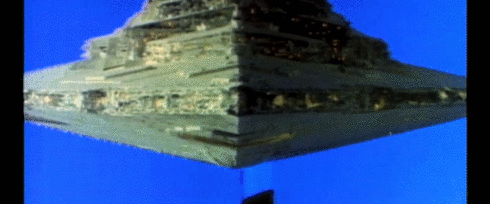
Top 10 Practical Movie Effects of All Time
You don’t have to be a CGI master to create these 10 practical effects.
For those who don’t know, practical effects are visual tricks that utilize no CGI whatsoever. However, the name is a little misleading. Just because an effect is practical doesn’t mean it is simple…just ask Christopher Nolan (who’s known for his usage of practical effects). Here are 10 of the greatest practical effects techniques in film history…
10. Forced Perspective
If you’ve ever seen tourist photos from the Leaning Tower of Pisa than you are familiar with forced perspective. But forced perspective is also a really useful tool to create depth when CGI won’t do the trick. Peter Jackson used this technique to show a size difference between Gandalf and Frodo in the Lord of the Rings.
9. Using Makeup
Instead of using fake blood bursts in After Effects or compositing a 3D model on live action footage, try actually creating the effect using blood. An American Werewolf in London showcases a transformation scene that demonstrates what can be done with a little makeup and a lot of patience.
8. Modeling
Rather than creating a CGI 3D model, try creating an effect using actual models. Models made for The Thing took 57 weeks to create but in the end the effects were absolutely terrifying.
7. Optical Compositing
The live action equivalent of masking, optical compositing is forced perspective with separate live action footage. Optical compositing can be easily accomplished using programs such as After Effects, but this one might be a little less practical than the previous effects. Example from The Ten Commandments.
6. Blue Screen
Serving as the backbone for creating the awesome effects in the original Star Wars movie, blue screens allowed for compositing before computer VFX software.
5. Stop Motion
Sure stop motion takes a lot of time and patience, but the payoff is worth it. In a world before computers, stop motion models were used to create otherwise impossible monsters. Ranging from King Kong to Jason and the Argonauts, stop motion was all over the golden age of Hollywood.
4. Exposure Techniques
Using different exposure techniques can give you a lot of really cool results. In 2001: A Space Odyssey, Doug Trumbull used a spherical scanning technique to get the iconic star gate look.
3. Rotating Set
In the classic sense of the word there is nothing practical about creating a set that can rotate. But if you are wanting to make a realistic anti-gravity scene creating a rotating set can create some really awesome results.
2. Real Effects, No Models
Why pretend to create an effect when you can actually do it? Well if you have a Christopher Nolan sized budget than that’s exactly what you can do. In The Dark Knight Rises, Nolan literally had a plane pulling another plane through the sky.
1. The Fake Mirror Effect
This effect is pretty straight forward. Instead of placing a mirror on set, simply create a hole in the wall with a new room and look-alikes. Terminator 2 famously did this to show Arnold Schwarzenegger’s head being dissected but our favorite mirror effect is from Airplane. The following video created by CineFIX shows all 10 practical effects and some bonus behind the scenes footage:
This video was first shared by CineFIX on their YouTube Channel. Thanks for sharing guys!
Have any practical effects that should have made the list? Share in the comments below.
















